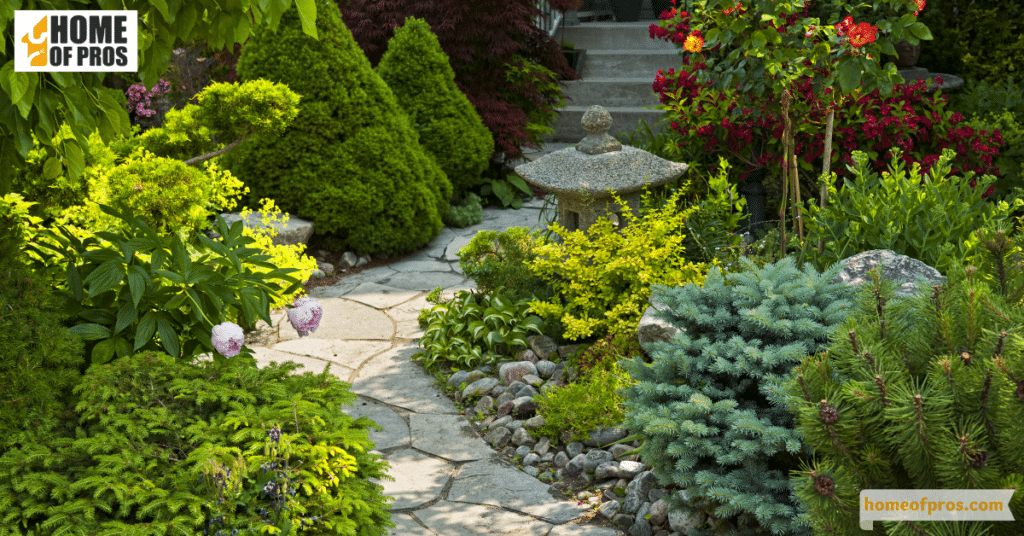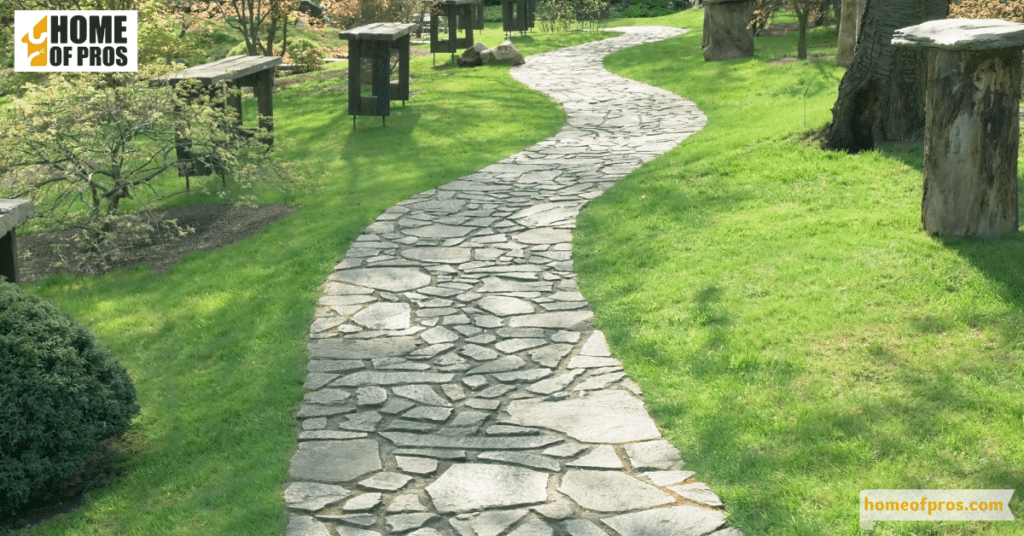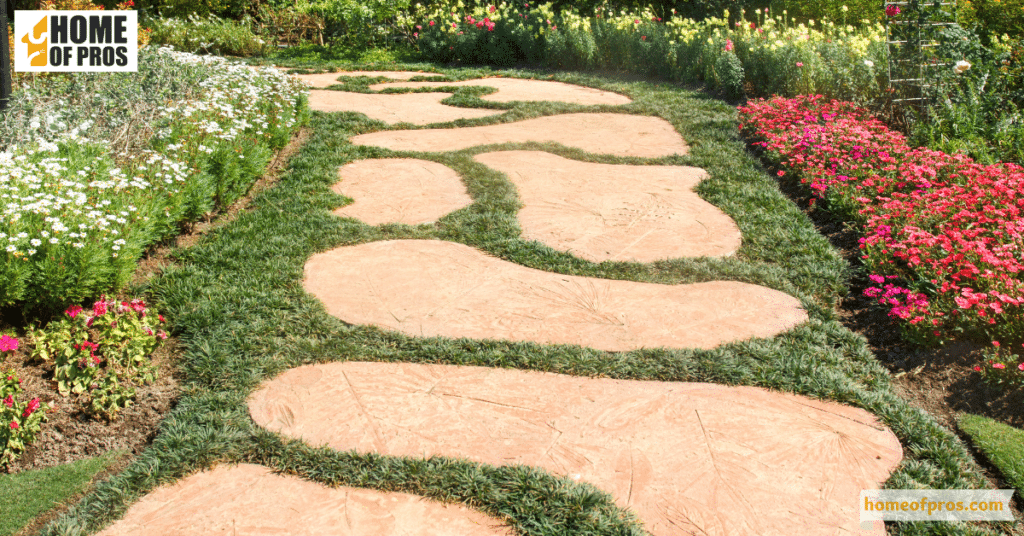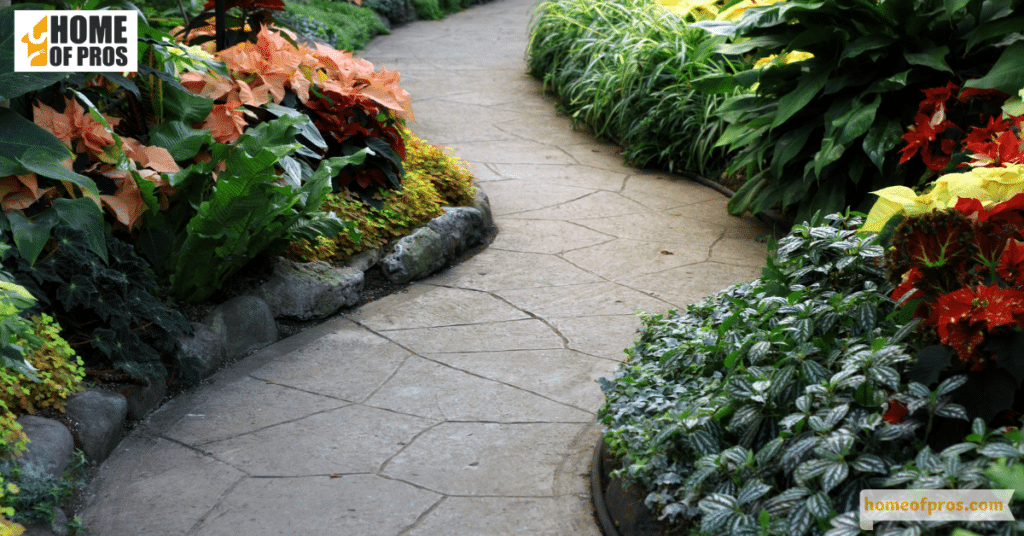Creating a picturesque garden path requires meticulous planning and a fusion of functionality and aesthetics. Start by considering the path’s purpose, determining the most suitable materials, and envisioning its curve amidst your garden’s landscape. With careful design and execution, your garden path can be both a journey and a destination in itself.
Garden paths are not just practical routes; they’re the heartbeats of enchanting landscapes. A well-designed path offers more than mere accessibility—it weaves aesthetics with function, guiding visitors through a curated experience amidst the beauty of nature. Delve with us into the art of crafting paths that not only enhance a garden’s charm but also serve a vital purpose.

1. Determine the Purpose of Your Path
Your garden path is a narrative waiting to be written in the language of design. Take a moment to reflect on the story you want it to tell. Is it a pathway to serenity, where tranquil and reflective walks intertwine with the beauty of your garden? Is it the guiding thread through an open-air museum, sharing the secrets of your garden’s treasures with visitors?
Or perhaps, it’s a functional conduit leading to an inviting outdoor seating area, where friends and family can gather amidst nature’s embrace. This initial step in planning is the cornerstone upon which your entire garden path will be built. It shapes the design, dictates the material selection, and orchestrates the path’s graceful dance through your garden.

2. Site Analysis and Measurement
Your garden is a symphony of unique elements, and understanding each note is paramount to composing the perfect garden path. Observe how sunlight pirouettes through the space, painting ever-changing patterns and highlighting the garden’s gems. Take note of the soil’s character—its texture, composition, and moisture-retention capacity—affecting plant health and the path’s foundation.
Study the choreography of water, identifying drainage patterns and areas prone to pooling. And don’t forget to recognize the quieter players—the shadowy corners where the garden’s understory thrives in dappled sunlight.

3. Material Selection
Choosing the right material for your garden path is like selecting the instrument for a musical composition; it defines the path’s ambiance and the tactile sensations it evokes. Gravel, for instance, offers a rustic, underfoot crunch reminiscent of country roads. Smooth stones create a zen-like, minimalist aura, inviting contemplative walks.
Bricks, with their timeless appeal, evoke the charm of a bygone era, while wood resonates with the natural, earthy vibes of a forest trail. However, the choice of material isn’t just about aesthetics. It’s a deliberation of durability, maintenance needs, and environmental impact.

4. Designing the Path’s Layout
Your garden path is more than a functional strip—it’s a vital character in your garden’s narrative. Its layout determines whether it will be a bold protagonist or a subtle guide. Will it be a straight path, offering a direct and purposeful journey through your garden’s story? Or will it meander gracefully, encouraging leisurely exploration and discovery at every turn?
Critical to this design process is the path’s relationship with the existing natural elements of your garden. It must harmonize with the landscape, complementing the growth patterns of plants, respecting the delicate balance of light and shadow, and enhancing rather than overshadowing the unique features you wish to highlight.

5. Ground Preparation and Installation
Just as a painter needs a sturdy canvas, your garden path requires a stable foundation to endure the seasons gracefully. This phase is where the dream transforms into reality. Begin by marking the path’s boundaries, like sketching the outlines of your masterpiece. Then, dig to the required depth, excavating the soil with the precision of a sculptor carving marble.
Leveling is paramount for a consistent and harmonious surface, especially when dealing with materials like bricks or tiles. Think of it as sculpting the path’s contours, ensuring that it flows seamlessly through your garden’s story. Each material has its unique installation technique—gravels are spread, creating a rustic tapestry underfoot, while stepping stones are set with the precision of mosaic art.

6. Adding Personal Touches and Decorations
With the foundation laid, it’s time to infuse your path with personality and charm. This is where the path evolves from functional to enchanting, a canvas waiting for your artistic expression. Think of it as adding the finishing touches to a masterpiece.
Consider integrating solar-powered path lights that cast a soft glow, transforming your garden into a magical realm at night. Border the path with fragrant herbs or vibrant flowers, engaging the senses with every step. This sensory delight can elevate the experience from mere utility to a sensory journey.

7. Maintenance and Care
Like all beautiful things in life, your garden path requires tender love and care. Beauty, after all, is not just in creation but in the nurturing that follows. Regular maintenance is key to preserving the path’s allure. This can include replenishing gravel as it naturally shifts, weeding between stones to maintain a clean appearance, or ensuring wooden paths are treated to withstand the elements.
Regular inspections act as the watchful eye, helping spot early signs of wear and addressing them promptly. Seasonal care, such as preventing moss growth or replacing loose tiles, ensures the path retains its charm and functionality.

Conclusion
Creating a garden path is a labor of love, a synergy of design and nature. It reflects both the gardener’s personality and the garden’s intrinsic character. A thoughtfully crafted path has the power to transform your outdoor space, not just in its visual appeal but in how you and your visitors experience and interact with nature.
As you embark on this beautiful journey of design and discovery, watch your garden unveil its narratives in newer, profound ways. It’s more than a path; it’s an expression of your connection with the natural world.












